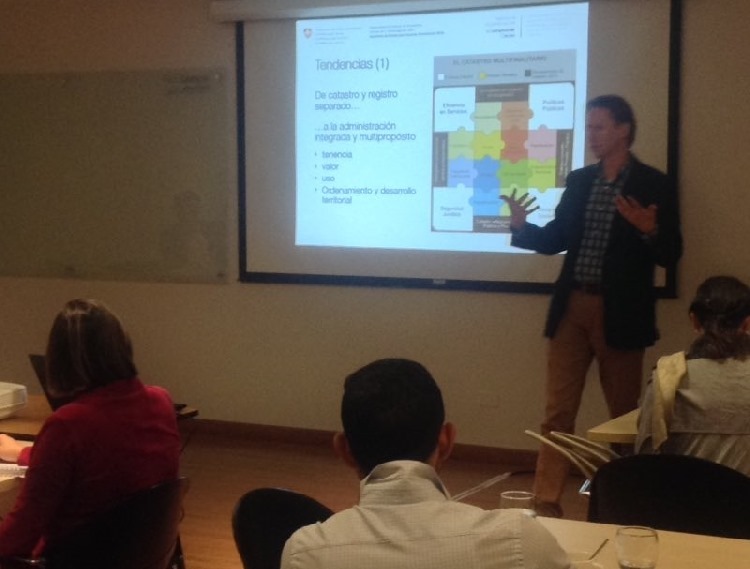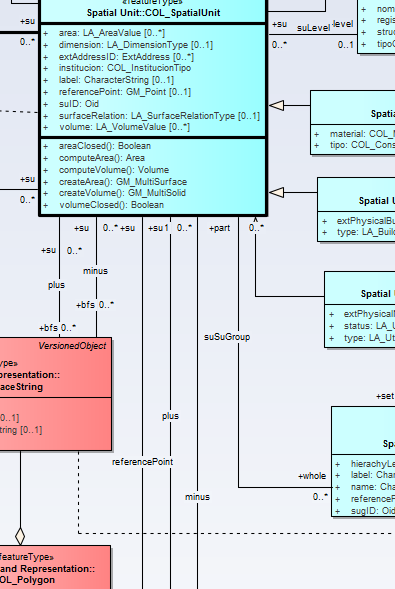Land Administration Domain Model - Case of Colombia
The administration of the Earth is currently one of the main challenges for countries. It is not a new aspiration, since its function is more than explicit in the main articles of the constitution and the different laws that govern the relationship of the inhabitants with the public and private resources of the nation. However, there is an international trend for the formation of national systems that consolidate a national policy in which the advantages that technologies now offer, the requirements of globalization and of course the demand of the inhabitants for the efficiency of the public services.
From a good source I have been informed that Colombia is currently in the process of adopting ISO 19152, known as Land Administration Domain Model. The LADM, beyond being a standard of worldwide applicability, is the result of the consensus of many specialists in property management, derived from the study of how different countries of the world do it as a result of that 1998 declaration that prays the replacement of traditional cadastre schemes through the use of models. This is the main reason why the LADM cannot be ignored by professionals linked to earth sciences and in the case of Colombia, as expected, a solution is not being seen in itself, but from a perspective of spatial semantics, as a facilitator for the implementation of a national policy for the administration not only of land rights but in general of the different assets of the nation.

I mention the case of Colombia, because it will be necessary to be aware of its progress, as an interesting exercise that will undoubtedly be visible beyond the Latin American context. In the first phase that began in the second semester of 2015, not only the challenge of aligning different institutions related to the management of the nation's tangible and intangible assets has become evident; It also highlights the evident leadership and maturity that institutions such as the Agustín Codazzi Institute, the Superintendency of Notaries and Registry have acquired and the influence of international cooperation seeking to internationalize good practices.
Geofumar in the LADM seems to me an appropriate decision, given the challenges involved in mainstreaming the planning and unifying the actions of entities such as the Rural Property Formalization Program, the Land Restitution Unit, the INCODER Colombian Rural Development Institute and the cadastres decentralized that in some cases I think have better conditions than the national instance before the need to adapt to the changes.
International trends in land management.
I must insist that the Land Administration is not an unknown science for the majority of professionals in the Land Registry-Registration-Land Management sector; It will be novel to understand UML models on which the LADM standard is presented and the way to materialize it in an institutional scheme that already exists and in the face of working technology platforms. So, to complement this article, I recall the value of the irreversible trends in Land Administration that have been presented in one of the workshops of the current phase and of which I can hardly comment that border on the obvious. but they represent the main challenges of the Colombian process.

La decentralization of the information updating processes, from the central levels to the local governments, from an accountability perspective not only in terms of fiscal cadastre but also legal.
- Incorporation Transactional systems through which the operation of tenure relationships between interested parties, including the government, is controlled in objects that represent rights of public interest. An interesting aspect of this trend is that centralization does not imply more bureaucratization, since it is complemented by the first trend, in which the operators of the transactions are local governments, private entities and individuals; but operating on National control transactional systems.
- The use of Databases with history of administrative and geometric data, modeled both in the storage of documentary sources and in the spatial versioning. This implies not only doing territorial research or planning plans, but also modeling its extract with a view to having an applicability on real estate and with reference to its current version.
- The use of Standardized data models Independently of technological platforms, adopting standards that conceptualize the logical model from which both the physical model and the processes come; Regardless of whether you use proprietary or free software.
- Model-oriented architecture, known in English as MDA (Model driven architecture). Not a simple aspect, due to the urgency of the human interface to feed data and the risk of dying in time without early victories that justify the costs of changing mentality.
- Integration of land rights, land use and territorial planning, simplified in relation Subject-Subject-Law, But extended to a scheme that allows to see the relation of rights beyond what the law defines explicitly and can be applicable to material and immaterial property.
- View of the Cadastre from a perspective of Lifecycle, with the obligation to think about 3D, which although it is not a visualization urgency due to the inability to complete the 2D coverage, it must be incorporated even at an administrative level due to the urban urgency of horizontal property and the need to be ready to 4D, not just from a Optics BIM But because the relationship with time only occupies automation.
- The orientation towards Simplicity and ease of use, which implies decriminalizing the World Bank proposal to finalize the world cadastre in the short term using the plot point as an urgent basis but integrated to the property registry, relegating the precision for when we have time -And silver-. By then we may realize that the whole world has done the rest OpenCadastreMap style.
- La Multidisciplinary integration of people linked to land administration, each doing his own thing, in his system, but replicating in a data exchange model under interoperability standards. Of course, this implies not seeing technology as an end in itself but as a way to achieve an identified objective; It implies gradually adding actors, avoiding discarding experienced specialists due to their incompatibility with technology, but also empowering young people to be ready to take over on the route that will surely take several years.
-
The challenge of Colombia with the LADM
I suggest as a mental exercise of general application, to follow up on what Colombia will do, that to be honest it does not have it easy, but that with the political will and persistence for the high objectives of the safe nation they will be able to take advantage of the opportunities that now They show up -Who would like to have other countries- Among those that are glimpsed:
 The incorporation of the public Law As one more record that expresses the cartographic richness and converts it into rights, restrictions and responsibilities of both public entities and private parties.
The incorporation of the public Law As one more record that expresses the cartographic richness and converts it into rights, restrictions and responsibilities of both public entities and private parties.- The development of pilot projects Multipurpose cadastre, Under a vision of simplification of a cadastral data sheet by delegating responsibility for updating data.
- The formation of a Land management node Within the Colombian Spatial Data Infrastructure ICDE, as a model that goes beyond the provision of standardized data geoportals.
- The updating of methodologies that simplify the actions of local governments and dependence on core policies, especially with regard to Cadastral valuation, but also openness to survey methods, simplifying what “cool” of complexity and precision for the preeminence of keeping data updated.
- The tenacity Battle with the polygon, In the face of the country's inevitable scenario of using ESRI almost as a geomatic version of God and the stubbornness of ISO-19152 fumes for keeping the bow-node as the only primitive way of explaining the universe.
- The integration of Registration and Registration in a single transactional system, in which it is possible to see not only who is a natural / legal / public person but also the consolidated rights in matters of real property, its geometry and legal and administrative charges. This challenge, beyond the institutional transformation -It is not urgent- implies a change of mentality in the global vision of the registries, as a responsibility of the state, beyond the urgent intervention of projects with good intention but with the aspiration to converge in public policies of national interest.
- The international visibility of the LADM Bananized To the particularities of what the Colombians have done for many years.

The wish list is endless and in the good sense of the real, even utopian. But that same feeling happened to anyone 14 years ago when his mentor gave him two documents that will have changed his way of seeing the world; especially if these documents were the draft of the FIG Cadastre Proposal 2014 and the abstract of Chrit Lemmen "Core Cadastral Domain Model".






